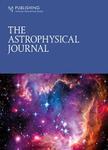版权所有:内蒙古大学图书馆 技术提供:维普资讯• 智图
内蒙古自治区呼和浩特市赛罕区大学西街235号 邮编: 010021
T=题名(书名、题名),A=作者(责任者),K=主题词,P=出版物名称,PU=出版社名称,O=机构(作者单位、学位授予单位、专利申请人),L=中图分类号,C=学科分类号,U=全部字段,Y=年(出版发行年、学位年度、标准发布年)
AND代表“并且”;OR代表“或者”;NOT代表“不包含”;(注意必须大写,运算符两边需空一格)
范例一:(K=图书馆学 OR K=情报学) AND A=范并思 AND Y=1982-2016
范例二:P=计算机应用与软件 AND (U=C++ OR U=Basic) NOT K=Visual AND Y=2011-2016

Peaked-spectrum (PS) sources exhibit turnover characteristics in their broad radio spectra. However, the mechanism underlying this phenomenon remains elusive. The two most common hypotheses are synchrotron self-absorption (SSA) and free–free absorption (FFA). By incorporating multiple absorption scenarios, we propose a multimechanism hybrid model, which aligns well with current observational data and provides a good physical explanation. Using data from the GLEAM survey, we identified a sample of 4315 sources with peak frequencies between approximately 72 and 3000 MHz, most of which are MHz-peaked-spectrum sources. Our analysis shows that FFA rather than SSA is the dominant mechanism in producing the spectral turnover for most of the sources in this sample. The index of the optically thick spectrum αthick has a lower boundary due to FFA, and the steeper αthick indicates a complex multiabsorption mechanism. In particular, the external FFA produces substantial αthick, which exhibits a weak correlation with the peak frequency. Future ultralong-wavelength observations would also provide data on the spectrum of these sources at even lower frequencies. Determining the absorption mechanism that shaped the spectrum of these sources would be a crucial part of understanding their nature.
电话和邮箱必须正确填写,我们会与您联系确认。
版权所有:内蒙古大学图书馆 技术提供:维普资讯• 智图
内蒙古自治区呼和浩特市赛罕区大学西街235号 邮编: 010021

暂无评论